How to Read a Metal Detector Target ID Setting

Written by Piotr Lesniewski
Detectorist • Scotland
As an Amazon Associate we earn commission from qualifying purchases. Read our full Affiliate Disclosure.
You’ve probably wondered what those numbers on your metal detector screen actually mean. Target ID technology transforms metallic signatures into numerical values, giving you crucial clues about what lies beneath the surface before you dig.
While you might see values from 0-99, knowing which numbers signal trash and which hint at treasure isn’t always straightforward.
Several factors can skew these readings, potentially causing you to pass over valuable finds or waste time on worthless targets.
Key Takeaways
- Target ID feature is a display that provides a numerical or visual indication of the type of metal a buried object is likely made of
- Target ID numbers typically range from 0-99, with higher values indicating more conductive metals like silver and copper.
- Low numbers (0-40) usually indicate iron and foil, mid-range (40-70) suggest aluminum and some gold, while high numbers (60-99) often represent silver and copper.
- Sweep the detector slowly over targets and at different angles to get more accurate and consistent readings.
- Soil mineralization, target depth, object orientation, and nearby trash can all significantly affect Target ID accuracy.

What Is Target ID?
Treasure hunters rejoice—Target ID is your metal detector’s built-in translator. It’s the feature that helps you distinguish valuable finds from junk without digging up every signal.
When your detector encounters metal underground, it analyzes the object’s conductivity and displays a numerical value on your screen. This number serves as a predictive code, giving you insight into what might be lurking beneath the surface.
High-conductivity metals like silver and copper typically register higher numbers, while items like foil or iron usually display lower values.
The Target ID system essentially decodes the electromagnetic response from buried objects, transforming complicated signals into readable information.
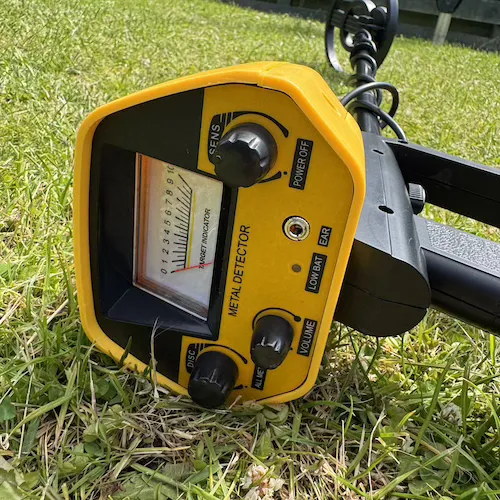
How Metal Detector Target ID Works
The technology behind Target ID operates on a surprisingly elegant principle. When you sweep your detector across the ground, its search coil emits an electromagnetic field. This field penetrates the soil and creates electrical currents in any metal objects it encounters.
These energized objects then generate their own electromagnetic fields, which your detector’s coil receives as return signals. The detector’s electronics analyze these signals, measuring the object’s conductivity and sometimes inductance.
Based on these properties, your detector calculates a numerical value—typically from 00 to 99—that represents the likely identity of the object. This Target ID number helps you distinguish between different metals before you dig, allowing you to focus on potentially valuable finds while avoiding common junk items.
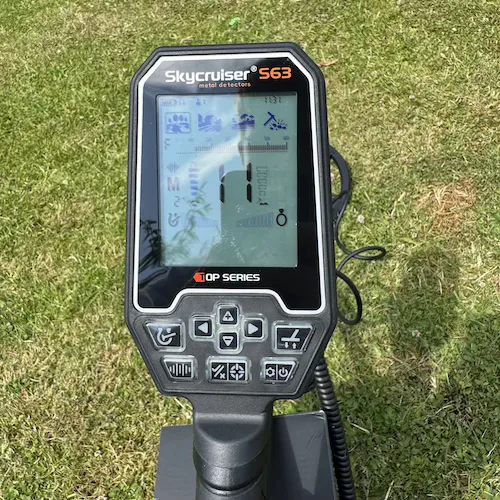
Interpreting the Target ID Number
Understanding Target ID numbers helps you identify metals before digging.
Low numbers (0-35/40) typically indicate iron, foil, and most pull tabs, while mid-range numbers often reveal aluminum, zinc pennies, and some gold jewelry.
High numbers (40+ or 60+ up to 99) usually represent copper, silver, and brass items like coins and quality ring jewelry.
Low Numbers (e.g., 0-35/40)
When your detector displays low numbers in the 0-35/40 range, you’re likely encountering ferrous materials that contain iron. These readings typically indicate common objects like nails, screws, and bottle caps.
Pay special attention to very low or negative numbers, as these almost certainly point to iron debris.
While it’s tempting to ignore these signals, experienced detectorists know that valuable items can sometimes hide among iron or be misidentified with low numbers due to depth or orientation.
Mid-Range Numbers (e.g., 40-60)
Mid-range numbers, typically falling between 40-70, represent a fascinating yet challenging category. This range often contains valuable metals like gold, particularly smaller pieces or those alloyed with other metals.
When you hit a mid-range reading, you might be detecting aluminum foil, pull-tabs, or smaller coins.
Don’t dismiss these signals too quickly—what looks like trash on your screen could actually be a small gold nugget or ring.
Gold’s readings can vary widely depending on its purity, size, and shape. You’ll develop better discrimination skills with practice.
High Numbers (e.g., 60+ up to 99)
High numbers on your display represent the most conductive targets. These readings typically indicate non-ferrous metals like silver and copper coins, substantial brass objects, and certain types of jewelry.
When your detector registers numbers in the 40+ to 99 range, you’re likely over something worth investigating. Silver coins consistently produce some of the highest readings possible.
Many detectorists specifically hunt for these high readings, as they often lead to valuable finds.
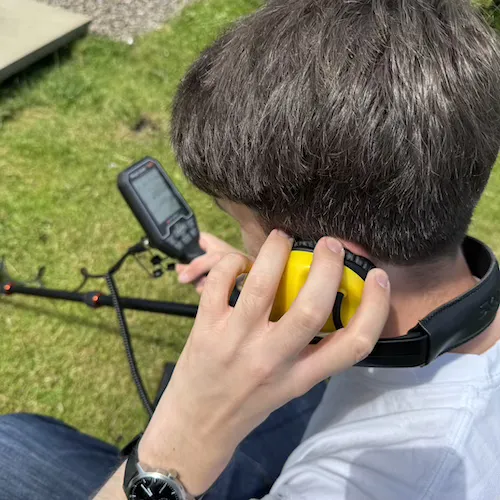
Factors Affecting Metal Detector Target ID Accuracy
While target ID numbers can seem definitive, several key factors will affect their accuracy. You’ll notice variations based on soil mineralization, target depth, size, shape, orientation, and trash masking.
Understanding these limitations helps you develop a more nuanced approach rather than relying solely on the displayed numbers.
Soil Conditions (Mineralization)
Soil conditions significantly impact Target ID accuracy, particularly in highly mineralized terrain like red clay or black sand. The high mineral content can interfere with your detector’s signals, causing misleading or fluctuating readings.
To overcome this challenge, proper ground balancing is essential. This calibration process helps your detector filter out the mineral signals from actual target signals.
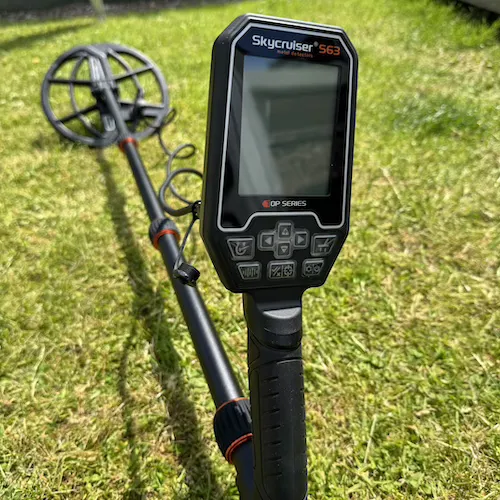
Target Depth
Target depth presents a significant challenge. Deeper targets consistently produce weaker signals, which can cause your Target ID numbers to become less stable or reliable.
When you encounter a deep target, you might see fluctuating ID numbers. To improve identification, slow your sweep speed to give your detector more time to process the weaker signal.
Target Size and Shape
The physical dimensions of buried objects significantly impact Target ID accuracy. A large, deep target can produce nearly identical signals to a small, shallow object.
Objects with irregular shapes present additional challenges. Unlike coins, items like twisted jewelry or broken artifacts can cause fluctuating or inconsistent readings, making reliable identification difficult without digging.
Target Orientation
How buried items lie in the soil dramatically affects Target ID accuracy. A coin positioned flat presents its maximum surface area, resulting in a strong, reliable signal.
Conversely, coins standing on edge will produce weaker, often erratic readings that may not match their typical Target ID numbers. A consistent reading from multiple angles usually indicates a flat-lying object.

Trash Masking
Your detector’s ability to accurately identify finds faces another common challenge: trash masking. When valuable targets lie close to junk, your detector may struggle to provide a clear reading.
A coin positioned next to a nail might produce a confusing or mixed Target ID. This masking effect can cause you to miss valuable finds if you rely too heavily on Target ID numbers.
When hunting in debris-heavy locations, consider digging more mixed signals than you normally would.
Detector Frequency
Detector frequency directly impacts Target ID accuracy. Lower frequencies excel at finding larger, more conductive targets like silver coins, while higher frequencies detect smaller, less conductive items like gold nuggets more effectively.
Multi-frequency technology offers significant advantages for ID reliability, providing more stable and accurate readings across diverse targets and ground conditions.
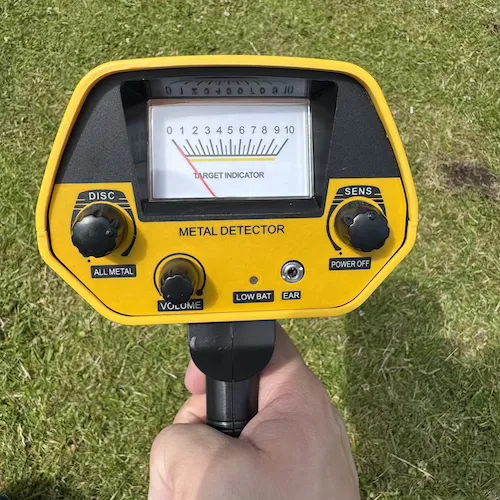
Sweep Speed and Coil Height
Your sweep technique significantly impacts Target ID accuracy. Maintain a consistent, moderate speed. If you sweep too quickly, the detector won’t have time to analyze the object, resulting in erratic IDs.
Equally important is coil height. Keep your coil at a steady distance above the ground—typically 1-2 inches is ideal. Practice a smooth, pendulum-like motion for the most reliable readings.
Tips for Effective Target ID Interpretation
To interpret target IDs effectively, you’ll need to master your specific machine’s numerical scale and visual indicators. Combining Target ID with audio tones and signal consistency will significantly improve your ability to identify valuable finds.
Learn Your Machine
Understanding your metal detector’s unique “language” is crucial.
Create a “test garden” in your yard where you can bury various known items at different depths. Take careful notes of the Target ID numbers and audio tones your detector produces for each item.
This hands-on education will train your ear and eyes to recognize valuable targets instantly.
Listen to the Audio Tones
The symphony of sounds from your detector tells a more nuanced story than any display. High, clear tones typically indicate conductive targets like silver, while low, grunting sounds often signal iron.
A crisp, repeatable signal generally points to something worthwhile. The audio and visual feedback work as complementary systems.
Use Discrimination (Wisely)
While discrimination can filter out unwanted targets, use it with restraint.
Be wary of setting discrimination levels too high. Aggressive filtering is problematic because many valuable targets, especially small gold items, can register in ranges associated with “junk.”
Start with minimal discrimination and adjust based on your location.
Pay Attention to Signal Consistency
Signal consistency is one of the most reliable indicators. When you pass your coil repeatedly over a target from multiple angles, watch the ID numbers.
A valuable find typically produces stable, consistent readings. Erratic numbers that jump significantly often indicate junk or multiple objects clustered together.
Consider the Depth Indicator
Modern detectors offer a depth indicator, which estimates how far beneath the surface a find is located.
When you combine depth information with Target ID, you get a more complete picture. For example, a high-conductivity reading at a shallow depth might be a modern coin, while the same reading at greater depth could be an older, more valuable find.
Don’t Be Afraid to Dig
The most experienced detectorists share a common philosophy: when in doubt, dig it out.
Target ID readings are helpful guides, not absolute guarantees. The only way to develop true identification skills is through consistent field experience. Many incredible finds have been unearthed by detectorists who decided to check “iffy” readings.
Practice, Practice, Practice
Mastering target ID requires dedicated practice. Each time you recover an item, take a moment to recall the ID number and tone.
Keep a small notebook to record these correlations or use your smartphone to document findings alongside their corresponding signals.
The patterns you recognize will gradually build your expertise, helping you make better decisions about which targets to pursue.
Conclusion
Learning to read your metal detector’s Target ID isn’t just about memorizing numbers—it’s about training your ear and eye to work together. You’ll face inconsistent readings and challenging conditions, but don’t get discouraged. With practice, you’ll develop an intuition for what’s hiding beneath the surface. Trust your detector but verify with a dig. The more time you spend in the field, the better you’ll become.
Author Profile

Piotr Lesniewski
"Digging up the past, one signal at a time."
Polish-born, Scotland-based, and obsessed with the beep. My passion began decades ago, exploring fields with my Dziadek (grandfather). Now, with over 10 years of digging under my belt, I'm here to share everything I've learned—unfiltered and unbiased—to help you unearth your own piece of history. No sales pitches, just real field experience.